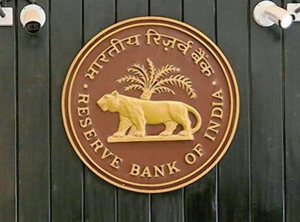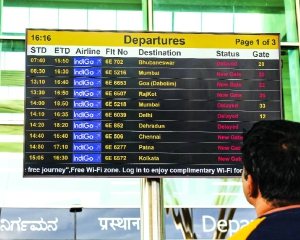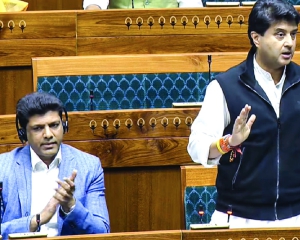The rainfall has grown erratic, endangering the livelihoods of millions. From delayed rains and failed crops to groundwater depletion and glacial melt, a cascading crisis is unfolding — one that not only threatens food securitybut also fuels rural distress, mass migration and growing unrest
Agriculture in India remains deeply intertwined with the monsoon, which accounts for nearly 70 per cent of the country’s annual rainfall and supports over half of its cultivated land. However, rising global temperatures have made the monsoon increasingly unpredictable. Early or delayed onsets are now common, while rainfall patterns have grown more volatile, with some regions experiencing intense downpours while others endure prolonged dry spells.
In states such as Maharashtra, Madhya Pradesh, and eastern Uttar Pradesh — where agriculture heavily depends on the monsoon rains — farmers are struggling to cope with these shifting climatic patterns. Smallholder farmers, who typically cultivate less than two hectares and constitute the majority of the agricultural workforce, often lack access to adequate irrigation, storage facilities, and financial support. Consequently, even slight disruptions in rainfall timing or unexpected droughts during critical crop phases can lead to significant yield losses, pushing already vulnerable households deeper into debt.
With monsoon rains becoming less reliable, farmers are increasingly turning to groundwater to keep their crops alive. Borewells and tube wells have become essential lifelines during prolonged dry spells. However, this fallback is fast becoming a crisis of its own. Unregulated and widespread extraction of groundwater is rapidly depleting aquifers, especially in regions already under significant water stress. According to the Central Ground Water Board (CGWB), over 1,000 of the 6,607 assessed groundwater blocks across the country have been classified as “overexploited.†The situation is particularly severe in the northwestern, western, and southern peninsular regions of the country. In states like Punjab, Haryana, and Uttar Pradesh, decades of intensive agriculture — especially the cultivation of water-intensive crops such as wheat and paddy — have severely strained groundwater reserves. According to CGWB 2023 data, 87 per cent of Punjab’s 153 assessed blocks are classified as overexploited, critical, or semi-critical, leaving only 13 per cent in the ‘safe’ category. Haryana fares no better, with more than 75.5 per cent of its groundwater blocks deemed unsafe for continued extraction. This unsustainable pattern of groundwater use is driven by a mix of poorly designed policy incentives, unreliable surface water availability, and weak regulatory oversight. Subsidies for electricity used in groundwater pumping and procurement policies that favour water-guzzling crops have inadvertently encouraged overuse.
The growing water crisis in India is made even worse by changes taking place at higher altitudes, particularly in the Hindu Kush Himalaya region. The region has seen average temperatures rise by +0.28°C per decade since 1951, with some river basins warming at an even faster rate. As a result, glacial melt has accelerated significantly. Scientific assessments indicate that the rate of glacier mass loss has increased by 65 per cent in the past decade, with average losses rising from — 0.17 metres of water equivalent per year between 2000 and 2009 to — 0.28 metres per year between 2010 and 2019.
The rapid retreat of glaciers poses serious risks to downstream water availability, especially for key glacier-fed rivers such as the Ganges, Brahmaputra, and Indus. These rivers are vital lifelines, supporting millions across northern India by providing water for irrigation, drinking, and hydroelectric power. Historically, meltwater from these glaciers played a crucial role in sustaining river flows and replenishing groundwater supplies. However, the accelerated glacial melt and resulting drop in river discharge, especially during dry seasons, are slowing groundwater recharge. This poses a severe challenge to farmers who depend heavily on both groundwater and river water to sustain their crops. Reduced river flows are also undermining canal irrigation systems and hydropower generation, both of which are essential for India’s agricultural productivity and energy security.
As both surface and groundwater sources come under increasing stress, the consequences are becoming visible in the form of rising soil salinity — especially in heavily irrigated regions. This problem is particularly acute in coastal areas such as the Sundarbans in West Bengal and parts of Andhra Pradesh and Tamil Nadu, where rising sea levels have led to saltwater intrusion into freshwater aquifers and paddy fields. In the Sundarbans alone, nearly 30 per cent of arable land is affected by salinity. Across the country, approximately 6.74 million hectares of land are classified as salt-affected, and this area is expanding by nearly 10 per cent annually. Experts warn that if this trend continues unchecked, nearly half of India’s cultivable land could be compromised by 2050.
The increasing soil salinity is driving down agricultural productivity and escalating reclamation costs — often too expensive for small and marginal farmers. Many are forced to abandon farming or shift to alternative livelihoods like shrimp aquaculture, which can further exacerbate salinity problems. With more than half of India’s workforce dependent on agriculture, the loss of fertile land presents a dire threat not only to rural livelihoods but also to the country’s overall food security. According to the Desertification and Land Degradation Atlas of India, over 30 per cent of the country’s total geographical area is undergoing desertification/ degradation, much of it driven by water and wind erosion, and loss of soil fertility. States like Rajasthan, Maharashtra, Gujarat, Jammu & Kashmir, Karnataka, Jharkhand, Odisha, Madhya Pradesh and Telangana are among the worst affected. Experts warn that rising temperatures are compounding the crisis by depleting soil moisture and increasing water stress during critical crop stages such as flowering and grain filling. The Indo-Gangetic plains, India’s wheat basket, are already experiencing significant yield declines of 1 per cent to 8 per cent (depending on the region) due to these climate pressures. However, when indirect impacts — particularly reduced water availability and declining irrigation levels — are taken into account, wheat yields are plummeting even more sharply, with losses ranging from 4 per cent to as much as 36 per cent.
Climate change is also intensifying the threat of agricultural pests and diseases by creating favourable conditions for their proliferation. Rising temperatures, altered rainfall patterns, and changing humidity levels have expanded the range and severity of pest outbreaks. For instance, the locust swarms that ravaged crops across Rajasthan, Gujarat, Madhya Pradesh, and parts of Uttar Pradesh and Maharashtra in 2020 were partly triggered by unusually wet weather conditions in the Arabian Peninsula, linked to climate variability. These swarms ravaged nearly 48,669 square kilometres of cropland, with Maharashtra being the hardest hit, losing over 10 per cent of its farmland. Similarly, the incidence of pests such as the fall armyworm, whiteflies, and mealybugs has increased significantly. Climate change is also altering the life cycles of pests and their natural predators, reducing the effectiveness of traditional pest control methods. This has forced farmers to increase pesticide usage, leading to higher production costs, health hazards, and environmental degradation.
These interconnected challenges are deepening agricultural distress, severely impacting farmers’ livelihoods and mental health. Financial pressures and uncertainty have contributed to a tragic rise in farmer suicides. In 2022 alone, more than 11,000 suicides were reported, with Maharashtra, Madhya Pradesh, Telangana, and Karnataka bearing the greatest burden. As farming becomes increasingly unsustainable, many young people are abandoning agriculture in pursuit of more secure livelihoods, driving a surge in rural-to-urban migration. This demographic shift is putting enormous strain on urban infrastructure, public services, and labour markets. In already overstretched cities, even minor disruptions can trigger social unrest, presenting significant challenges for local governance and law enforcement. Economic desperation in rural India has also been linked to rising protests and growing susceptibility to radical ideologies. Groups like the Naxalites in central and eastern India have historically exploited economic marginalisation and agrarian grievances to fuel anti-state sentiment and recruit disaffected populations.
If climate — induced despair continues unchecked, it risks deepening disillusionment and weakening the bond between vulnerable communities and the state — posing a serious threat to internal stability and national cohesion.
(The writers are former PCCFs, UP and Maharashtra. Views are personal)


























